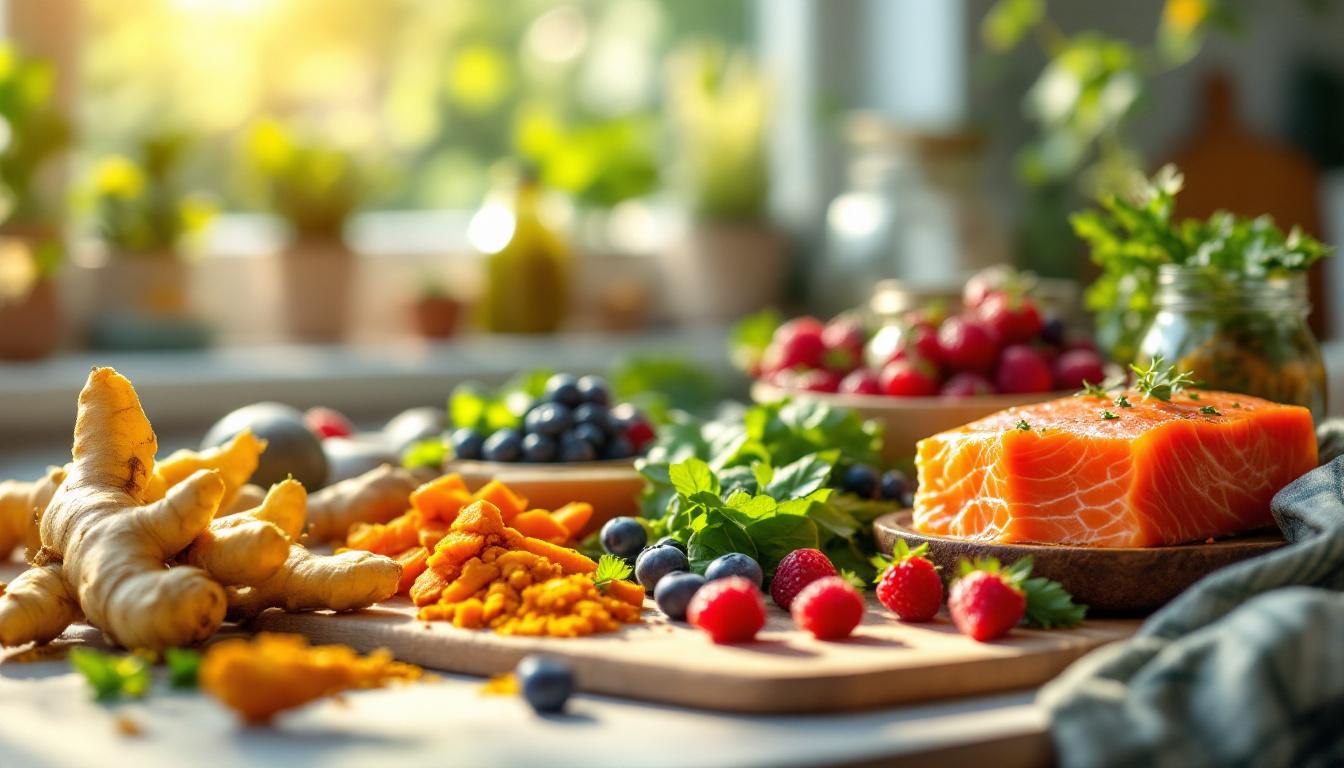Chronic inflammation silently undermines your health daily, affecting everything from joint pain to heart disease risk. What if your kitchen could become your most powerful ally in fighting this hidden threat? “The foods we consume daily either fuel or fight inflammation at a cellular level,” explains Dr. Sarah Chen, nutritional immunologist. “Creating an anti-inflammatory kitchen isn’t just about diet—it’s about designing a personal pharmacy in your home.”
The foundation of an anti-inflammatory kitchen
Your anti-inflammatory kitchen begins with strategic stocking. Focus on whole, minimally processed foods rich in antioxidants and phytonutrients that naturally combat inflammation.
“The most effective anti-inflammatory kitchen contains a rainbow of produce, healthy fats, and powerful spices,” notes Dr. Chen. “These ingredients work synergistically to reduce inflammatory markers more effectively than any single food alone.”
“I transformed my kitchen after being diagnosed with chronic inflammation,” shares Melissa Tanaka, 42. “Within three months of embracing anti-inflammatory eating, my joint pain decreased by 60% and my energy levels soared.”
Essential components to include:
- Colorful berries, leafy greens, and cruciferous vegetables rich in quercetin
- Omega-3 sources like wild-caught salmon and sardines
- Fermented foods such as kefir and sauerkraut for gut health
The spice cabinet: your inflammation fighting arsenal
Consider your spice rack a concentrated source of anti-inflammatory compounds. Turmeric, with its active compound curcumin, stands as perhaps the most powerful culinary anti-inflammatory agent.
Think of these spices as cellular firefighters, extinguishing inflammatory flames throughout your body. Just a quarter teaspoon of turmeric daily can significantly reduce inflammatory markers.
Other potent inflammation-fighting spices include:
- Ginger, which inhibits inflammatory pathways similar to some medications
- Cinnamon, which helps regulate blood sugar while fighting inflammation
- Garlic, which contains sulfur compounds that suppress inflammatory cytokines
The gut connection: your internal anti-inflammatory system
Your gut microbiome directly influences your body’s inflammatory response. Nurturing healthy gut bacteria is crucial for managing inflammation throughout your body.
Fermented foods introduce beneficial bacteria while fiber-rich foods feed them. This combination creates a protective barrier against inflammatory triggers entering your bloodstream.
Research shows that gut bacteria influence serotonin production, connecting inflammation not just to physical health but mental wellbeing too. Meanwhile, traditional food preparation methods can reduce inflammatory responses triggered by certain foods.
Beyond food: completing your anti-inflammatory lifestyle
An anti-inflammatory kitchen supports a comprehensive approach to wellness. Regular physical activity, even in short bursts, enhances your body’s anti-inflammatory capabilities.
Imagine your anti-inflammatory kitchen as the command center for your health revolution. Each meal becomes an opportunity to reduce inflammation and enhance wellbeing.
Ready to transform your kitchen into an anti-inflammatory powerhouse? Start by replacing one processed food with a whole food alternative daily. Introduce a new anti-inflammatory spice each week. Finally, incorporate fermented foods into at least one meal daily.
Your body is constantly either fighting or feeding inflammation. With an intentionally designed anti-inflammatory kitchen, you’re choosing to support your body’s natural healing processes with every bite. What will you change in your kitchen today?
